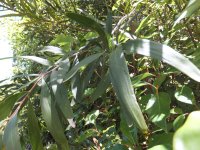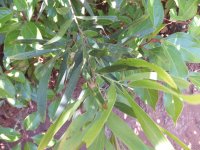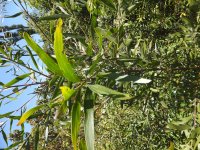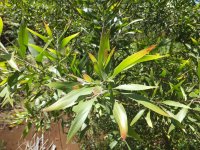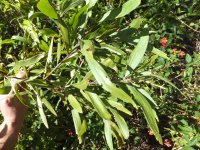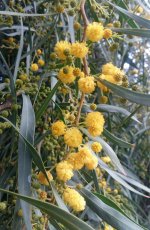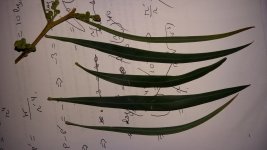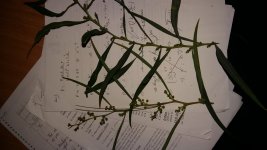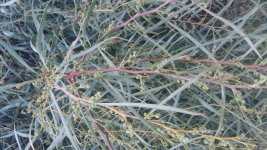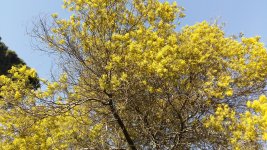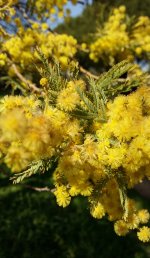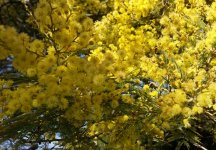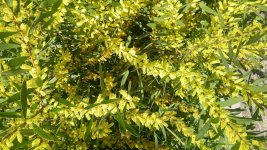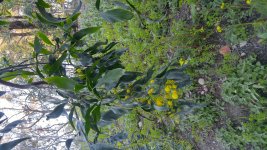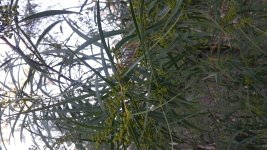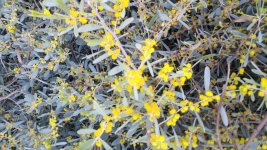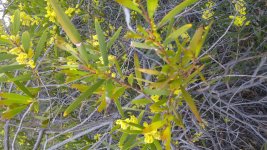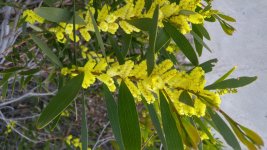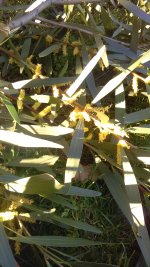Hi there,
I am looking to identify what I hope is an Acacia Simplex. Let me get more into details here.
I live in the South Pacific, and I know we have some Acacia Simplex where I live, but not quiet sure if I'm sure wich one it is... I saw on the internet that Simplex has kind of roundy yellow flowers, but the one I saw has that kind of long, not round at all flowers, a bit like that, but not quiet as long and really small compared to the picture :
Another picture of flowers looking like what I got on my trees :
http://hasbrouck.asu.edu/imglib/seinet/Fabaceae/photos/Acacia_millefolia_9-16-2009_2-43-50_PM.JPG
The flowers on my trees were dry tho, so I cannot really say it is exactly looking like the pictures. I cannot even say the color they are, being dry. The pictures are just to show you the general shape of the flowers.
Do you think it still can be a Simplex? Or has the flowers to be round, ball style (like this : like this :
https://upload.wikimedia.org/wikipedia/commons/5/5c/Acacia_constricta_flower.jpg)? I must say I was almost certain my trees were A. Simplex, until I saw the dry flowers, not round shaped like what I saw on the internet...
The trees are around the beach, maybe 3-4 meters tall.
The leaves of the tree are bright green, look thick, greasy and plasticy (on young trees). On some young trees, the leaves are kind of round and spoon shaped. The ones on bigger trees are still bright green, but not quiet as round and spoon shaped. They are also less thick and greasy.
The outer bark is brown to dark brown, while the inner bark is reddish brown to pale red, with some parts being bloody red.
Another thing is, I tried and cut a little bit of bark from the tree, a lot of sticky latex came out. I may have touched my face with hands and something like 30min after, my face and eyes started burning. Few hours later, even after washing my face, I still feel my eyes and face skin burning. Is that common when dealing with Simplex latex? Or is Simplex latex supposed to be "innofensive"? Or any other Acacia latex is irritating or isn't?
However, the bark I got is reddish brown to pale red and bloody red on some parts, is that a good sign? I read somewhere that red bark tends to have dmt in it, is it correct or is it common, even on non-dmt containing trees?
So what do you think? Simplex or not Simplex? If not, what could it be?
I know it is a lot of questions, but I would like to be sure the trees I got really are Simplex trees, or at least a specie containing dmt. Not to mention there is not a whole lot of info on Simplex trees. Some sources even seem to be contradictory on some points.
I would love to extract and try a little of that mystical thing dmt is, but I will only be able to try the extraction in a few weeks.
I would also like to thank everyone here for all the content provided. This seems like a great community of peacefull and respectfull people.
In the hope I will finally be able to get this done, thank you very much.


